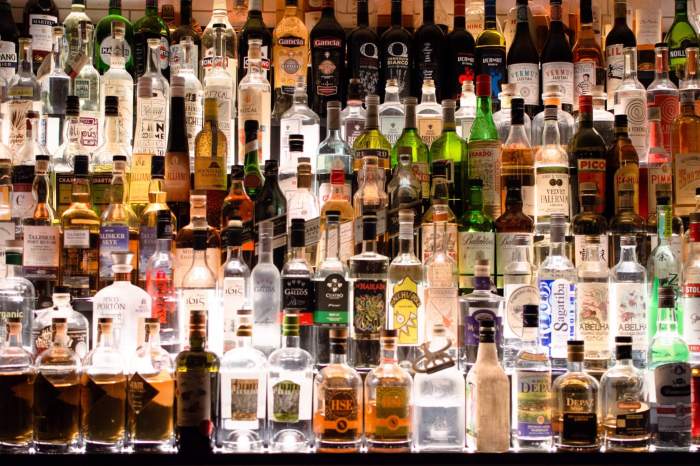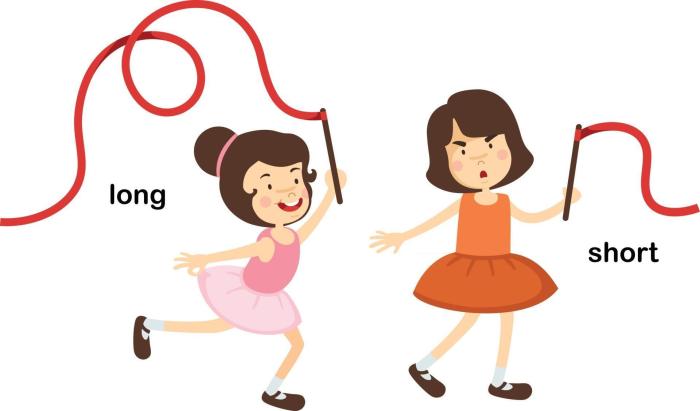Why does alcohol make me sleepy? This seemingly simple question delves into a complex interplay of physiological responses, individual differences, and potential interactions. From the initial impact on brain function to long-term consequences, understanding this phenomenon is key to responsible alcohol consumption and overall well-being. This exploration examines the science behind alcohol’s sleep-inducing effects, considering various factors that influence the experience for different individuals.
This comprehensive look at the topic will investigate the physiological mechanisms behind alcohol’s sedative effects, examining how it influences neurotransmitters and brain activity. Individual variations in response will be explored, highlighting factors like body weight, metabolism, and pre-existing conditions. The potential dangers of mixing alcohol with other substances, including medications and caffeine, will also be discussed. We’ll also examine the short-term and long-term effects on sleep patterns and consider alternative explanations, such as the role of stress and food intake.
Physiological Effects of Alcohol

Alcohol’s effect on the body, particularly the central nervous system, is multifaceted and complex. It’s not simply a matter of slowing things down; the interaction with various neurotransmitters and receptors creates a cascade of physiological changes that culminate in the sensation of sleepiness. Understanding these mechanisms provides insight into how alcohol impacts our bodies.
Alcohol’s Impact on the Central Nervous System
Alcohol primarily acts as a depressant on the central nervous system (CNS). It interferes with the normal transmission of signals between neurons, essentially slowing down brain activity. This reduction in activity manifests in various ways, including decreased alertness, impaired coordination, and ultimately, feelings of drowsiness. The effect is not uniform across the brain; different areas respond differently to alcohol’s presence.
Mechanisms of Alcohol-Induced Reduced Brain Activity
Alcohol’s ability to reduce brain activity stems from its interaction with neurotransmitter systems. It’s important to note that alcohol does not directlyproduce* sleepiness. Rather, it alters the balance of neurotransmitters, ultimately impacting brain function.
- Alcohol’s interaction with GABA receptors is a key factor. GABA (gamma-aminobutyric acid) is an inhibitory neurotransmitter, meaning it reduces neuronal activity. Alcohol enhances the effect of GABA on its receptors, causing hyperpolarization of neurons and further inhibiting their firing. This is a significant contributor to the sedative effects of alcohol. In essence, alcohol effectively amplifies the inhibitory signals within the brain.
- Alcohol also affects glutamate, an excitatory neurotransmitter. Glutamate’s role is to stimulate neuronal activity. Alcohol reduces the activity of glutamate receptors, thereby countering the excitatory effects of glutamate and further contributing to the overall inhibitory impact on brain function.
Specific Neurotransmitters and Receptors Involved
The interaction of alcohol with specific neurotransmitter systems is crucial in understanding its impact on sleepiness.
- GABA A receptors are primary targets of alcohol. These receptors are widespread throughout the brain and are crucial for regulating neuronal excitability. Alcohol binds to these receptors, increasing their responsiveness to GABA, thereby enhancing the inhibitory effect and leading to a reduction in brain activity.
- Glutamate receptors, particularly NMDA receptors, are also affected. Alcohol reduces the activity of these receptors, further dampening the excitatory signals in the brain.
Physiological Changes Leading to Sleepiness
The combination of these effects leads to a series of physiological changes that contribute to feelings of sleepiness. Reduced brain activity translates into decreased alertness, slowed reflexes, and a general sense of relaxation. These changes can progress to drowsiness and, ultimately, sleep.
Comparison of Alcohol Concentration and Sleepiness
The relationship between alcohol concentration and the propensity for sleepiness is a complex one. Higher concentrations generally result in more pronounced effects. A table illustrating this relationship is provided below:
| Alcohol Concentration (approximate) | Expected Effect on Sleepiness |
|---|---|
| 0.05% (low) | Mild relaxation, subtle drowsiness in some individuals |
| 0.10% (moderate) | Increased relaxation, pronounced drowsiness in many individuals; impaired judgment |
| 0.15% (moderate-high) | Significant drowsiness, difficulty maintaining wakefulness; marked impairment in motor skills |
| 0.20% (high) | Deep sleep or unconsciousness; severe impairment in motor skills and cognitive function |
Individual Differences and Factors
Alcohol’s sleep-inducing effects aren’t uniform. Numerous individual characteristics play a crucial role in how our bodies respond to its presence. Understanding these differences is vital for appreciating the complex relationship between alcohol and sleep. Factors like body weight, metabolism, and tolerance levels, alongside pre-existing conditions, all contribute to the variability in sleep quality and duration following alcohol consumption.
This section delves into these intricacies, highlighting how individual variations can affect the alcohol-induced sleep experience.
Body Weight and Metabolism
Individual differences in body weight and metabolic rate significantly impact how quickly alcohol is processed and eliminated from the body. People with higher body weights may experience a delayed effect and a longer duration of alcohol’s influence on sleep. This is because the body has more volume to distribute the alcohol. Furthermore, individuals with faster metabolisms tend to clear alcohol from their systems more quickly, potentially leading to less pronounced sleep-inducing effects compared to those with slower metabolisms.
This difference in processing speed impacts the timing and intensity of alcohol’s influence on the sleep cycle.
Ever wonder why that glass of wine always sends you to dreamland? It’s often the alcohol’s effect on your central nervous system, slowing things down. However, if you’re noticing bright red blood in your stool, it’s crucial to seek immediate medical attention. This could be a sign of something more serious, and it’s always better to be safe than sorry.
For advice about bright red blood in stool, check out this helpful resource: advice about bright red blood in stool. Even if the alcohol-induced sleepiness is just a temporary thing, your overall health is more important, so don’t hesitate to consult a professional. Hopefully, you can get to the bottom of your sleepiness and stay healthy.
Tolerance and Genetics
Alcohol tolerance plays a crucial role in the sleep-inducing effects. Individuals with higher alcohol tolerance, having developed a physiological adaptation, may experience less pronounced sleepiness compared to those with lower tolerance. Genetics also influence alcohol metabolism and tolerance. Variations in genes that regulate alcohol-metabolizing enzymes can significantly affect how quickly alcohol is processed and its impact on sleep.
Gender Differences in Sleep Response
Women often metabolize alcohol differently than men, typically more slowly. This slower metabolism can lead to a more pronounced sleep-inducing effect for women compared to men, with potentially greater risk for sleep disturbances and disorders. Women also tend to have a lower body weight and different fat distribution, affecting alcohol distribution and concentration in the body. Furthermore, hormonal fluctuations throughout the menstrual cycle can further impact alcohol’s effect on sleep patterns in women.
Pre-existing Sleep Disorders and Conditions
Pre-existing sleep disorders, such as insomnia or sleep apnea, can interact with alcohol consumption in complex ways. Alcohol can exacerbate existing sleep problems by disrupting sleep architecture and reducing the quality of sleep. For instance, individuals with insomnia may find it harder to fall asleep or stay asleep after consuming alcohol. In contrast, sleep apnea patients might experience more severe episodes of breathing pauses during sleep when consuming alcohol.
Factors Affecting the Strength of Sleep-Inducing Effect
Several factors influence the strength of alcohol’s sleep-inducing effect, including the amount consumed, the individual’s overall health, the time of consumption, and the presence of other substances. Larger quantities of alcohol generally lead to a more pronounced sleep-inducing effect, but the duration of its impact might be longer. Also, individuals with underlying health conditions or those taking medications may experience a heightened or diminished response to alcohol.
Consumption of alcohol in combination with other substances, such as sedatives or tranquilizers, can significantly amplify its sleep-inducing effects, potentially resulting in serious consequences.
Possible Effects of Alcohol Consumption on Sleep Stages
| Sleep Stage | Potential Effects of Alcohol Consumption |
|---|---|
| Wakefulness | Alcohol can initially increase alertness but later induce drowsiness and difficulty staying awake. |
| Non-Rapid Eye Movement (NREM) Sleep | Alcohol can initially enhance NREM sleep, particularly the early stages. However, it can disrupt later stages of NREM sleep, leading to fragmented sleep and a less restorative experience. |
| Rapid Eye Movement (REM) Sleep | Alcohol can initially suppress REM sleep, leading to reduced dream activity and less restorative sleep. As the effects wear off, there might be an increase in REM rebound, potentially causing vivid or intense dreams. |
The table above summarizes the potential effects of alcohol consumption on various sleep stages. It highlights the complex and sometimes paradoxical influence of alcohol on different aspects of the sleep cycle.
Interactions with Other Substances
Mixing alcohol with other substances can significantly alter its effects on the body, particularly on sleep. Understanding these interactions is crucial for responsible consumption and avoiding potential health risks. The combined impact can lead to unpredictable consequences, ranging from intensified drowsiness to dangerous complications.
Impact on Sleep Quality
Alcohol’s sedative properties can be amplified or diminished when combined with other substances. For example, mixing alcohol with medications, particularly those with sedative or hypnotic effects, can lead to excessive drowsiness, slowed reaction times, and a higher risk of falls or accidents. This combination can disrupt the natural sleep cycle, leading to poor sleep quality and potential sleep disorders.
Conversely, mixing alcohol with stimulants like caffeine can create a paradoxical effect, masking the sedative effects of alcohol initially, but potentially leading to sleep disturbances later on as the caffeine wears off.
Effects on the Nervous System
Both alcohol and other central nervous system depressants, such as certain medications and illicit drugs, act on the same neurotransmitter systems in the brain. This overlapping effect can lead to a synergistic impact, potentially resulting in a greater degree of sedation and impairment than expected from either substance alone. The combined action of these substances can further depress the nervous system, slowing down brain activity and impacting cognitive functions, including judgment and motor skills.
Ever wondered why that glass of wine always makes you feel sleepy? It’s often due to alcohol’s effect on the central nervous system, slowing things down. Sometimes, though, that sleepiness might be a symptom of something more serious, like underlying issues relating to shortness of breath treatment. If you’re experiencing persistent or unusual shortness of breath, it’s important to seek professional medical advice, such as checking out shortness of breath treatment options.
Regardless, alcohol’s sedative properties are often the culprit behind that post-drink drowsiness.
This can have severe consequences, especially if driving or operating machinery.
Ever wondered why that glass of wine makes you feel so sleepy? It’s often due to alcohol’s effect on your central nervous system, slowing down brain activity. Interestingly, sleep needs can change with age, and older adults might not require as much sleep as younger adults. For more on that, check out this helpful article on do older adults need less sleep.
Regardless of age, though, alcohol can interfere with sleep patterns, potentially leading to less restorative sleep. So, while age might play a role, alcohol’s impact on sleep is usually a significant factor.
Combining Alcohol with Sleep Aids or Medications, Why does alcohol make me sleepy
Combining alcohol with sleep aids or other medications can be extremely dangerous. Many sleep aids, such as benzodiazepines, are also central nervous system depressants. Mixing them with alcohol can result in a dangerously high level of sedation, potentially leading to respiratory depression, coma, and even death. The risk is amplified if the individual has pre-existing medical conditions or takes other medications that could interact negatively with alcohol.
Intensifying or Diminishing Sleep-Inducing Effects
The interaction between alcohol and other substances can intensify or diminish its sleep-inducing effects. Some substances may enhance the sedative properties of alcohol, leading to a prolonged and deeper sleep, while others may counteract it, potentially causing difficulty falling asleep or staying asleep. The specific interaction depends on the individual’s metabolism, the type and dose of each substance, and pre-existing health conditions.
Substances to Avoid with Alcohol
To minimize the risk of negative interactions, it’s crucial to avoid certain substances when consuming alcohol. This includes various medications, both over-the-counter and prescription, including but not limited to sleep aids, antihistamines, and pain relievers. Illicit drugs should also be avoided when drinking alcohol, as their combined effects can be unpredictable and potentially dangerous. Caffeine, while not a depressant, can mask the initial sedative effects of alcohol, potentially leading to a misjudgment of its impact.
Potential Interactions Table
| Medication Type | Potential Interaction with Alcohol | Example | Possible Consequences |
|---|---|---|---|
| Sleep Aids (e.g., benzodiazepines) | Significant risk of excessive sedation, respiratory depression, and coma | Ambien, Lunesta | Increased risk of falls, accidents, and death |
| Antihistamines (e.g., diphenhydramine) | Increased drowsiness and impairment of cognitive function | Benadryl | Impaired driving ability, reduced alertness |
| Pain Relievers (e.g., opioids) | Increased risk of respiratory depression, overdose, and death | Codeine, Oxycodone | Severe respiratory problems, coma, death |
| Antidepressants (e.g., some types) | Potential for increased sedation, altered mood | Selective Serotonin Reuptake Inhibitors (SSRIs) | Drowsiness, reduced coordination |
Short-Term and Long-Term Consequences
Alcohol’s effect on sleep is multifaceted, impacting both the immediate experience and long-term health. While a drink might initially seem to promote drowsiness, the reality is far more complex, often leading to disrupted sleep patterns and potentially serious health consequences. Understanding these consequences is crucial for responsible alcohol consumption and overall well-being.
Immediate Effects on Sleep
Alcohol, despite its sedative properties, disrupts the natural sleep cycle. Initially, it may induce a sense of sleepiness, but this effect is often short-lived and can lead to poor sleep quality. The sedative impact is followed by a rebound effect, where sleep is often fragmented and less restorative. This is often characterized by frequent awakenings and difficulty returning to sleep.
Impact on Sleep Architecture and Quality
Alcohol’s influence on sleep architecture significantly impairs the quality of sleep. It interferes with the different stages of sleep, specifically the deeper, restorative stages like slow-wave sleep and REM sleep. This disruption leads to reduced time spent in these critical stages, hindering the body’s ability to recover and function optimally. A typical example of this would be someone who drinks heavily before bed experiencing vivid, disturbing dreams and waking up feeling unrefreshed, despite sleeping for a seemingly adequate duration.
Disruption of Sleep Patterns in the Short Term
Alcohol consumption disrupts the natural sleep-wake cycle. This disruption manifests as difficulty falling asleep, frequent awakenings throughout the night, and early morning awakenings. These disturbances in sleep patterns can negatively impact cognitive function, mood, and overall daytime alertness. For example, someone who consumes a significant amount of alcohol before a late-night event might experience a significantly more difficult time concentrating or performing well in the morning.
Long-Term Consequences of Regular Alcohol Consumption on Sleep
Chronic alcohol use has profound and long-lasting effects on sleep. It can contribute to the development of sleep disorders, including insomnia, sleep apnea, and restless legs syndrome. The disruption of sleep architecture persists, potentially leading to an overall reduction in sleep quality and quantity. This can manifest as a consistent inability to fall asleep, leading to chronic fatigue and impacting various aspects of daily life.
Relationship Between Chronic Alcohol Use and Sleep Disorders
A strong correlation exists between chronic alcohol use and sleep disorders. Alcohol’s effect on the central nervous system, particularly the brain areas regulating sleep, creates a cycle of worsening sleep quality. Over time, this chronic disruption can increase the risk of developing more severe sleep disorders, which, in turn, can exacerbate the negative consequences of alcohol use. For instance, a person with a history of chronic alcohol consumption may have a higher likelihood of experiencing insomnia and other sleep problems.
Table: Short-Term vs. Long-Term Impacts of Alcohol on Sleep
| Aspect | Short-Term Impact | Long-Term Impact |
|---|---|---|
| Sleep Initiation | Temporary drowsiness, followed by difficulty falling asleep | Chronic difficulty falling asleep, leading to insomnia |
| Sleep Quality | Fragmented sleep, frequent awakenings, reduced deep sleep | Reduced sleep quality, decreased sleep duration, increased sleep disorders (e.g., sleep apnea) |
| Sleep Architecture | Disruption of sleep stages, reduced REM and slow-wave sleep | Chronic disruption of sleep stages, making it harder to achieve restorative sleep |
| Sleep Patterns | Irregular sleep-wake cycle, early morning awakenings | Established sleep disorders, persistent sleep problems |
Alternative Explanations and Considerations
Alcohol’s effect on sleepiness is complex, and while its physiological impact is significant, other factors play a role. This section explores alternative explanations, considering how various elements can influence your experience of feeling sleepy after consuming alcohol. Understanding these factors can help clarify why you might feel tired, even after a single drink.While alcohol itself can induce sleepiness, it’s important to recognize that other variables can interact with alcohol’s effect, sometimes masking or amplifying the feeling of drowsiness.
This includes your individual physiology, prior activity levels, food consumption, stress levels, and even psychological factors. Furthermore, the interplay with pre-existing conditions, or co-occurring substances, significantly impacts the overall experience.
Other Potential Contributing Factors
Several factors beyond alcohol’s direct influence can contribute to feelings of sleepiness. These include the amount and type of food consumed, pre-existing stress levels, and general tiredness. A heavy meal, particularly one high in carbohydrates, can often lead to drowsiness. The body prioritizes digestion, diverting energy away from other functions. Similarly, if you are already feeling tired from a long day or experiencing high stress levels, alcohol may exacerbate this existing condition, leading to a stronger feeling of sleepiness.
The Role of Expectations and Psychological Factors
Your expectations and psychological state can significantly influence how you perceive alcohol’s effects. If you anticipate feeling drowsy after drinking, your body and mind might be primed to experience that feeling. This psychological predisposition, known as the placebo effect, can alter your perception of the physical effects of alcohol. Furthermore, a negative emotional state, such as anxiety or depression, can contribute to sleepiness, and alcohol might exacerbate these feelings.
Emotional States and Mental Health Conditions
Emotional states and pre-existing mental health conditions can impact the experience of sleepiness after alcohol consumption. Individuals experiencing anxiety, depression, or other mood disorders might be more susceptible to feeling drowsy after drinking. Alcohol can further exacerbate these symptoms, potentially leading to prolonged feelings of sleepiness. It’s essential to note that these interactions are complex and vary significantly from person to person.
Comparison with Other Sleep-Promoting Substances
Alcohol shares some similarities with other sleep-promoting substances in its ability to induce drowsiness. However, the mechanisms and long-term effects differ considerably. For example, certain medications prescribed for sleep disorders, such as benzodiazepines, can promote relaxation and sleep, but they often carry a higher risk of dependence. Melatonin, a hormone naturally produced by the body, also regulates sleep cycles and can promote sleepiness.
Crucially, alcohol’s impact on sleep is significantly different from the controlled and targeted actions of these substances.
Table Contrasting Sleepiness Caused by Alcohol with Other Causes
| Factor | Sleepiness Caused by Alcohol | Other Causes of Sleepiness |
|---|---|---|
| Mechanism | Depresses central nervous system activity | Varied, including physiological, psychological, and environmental factors |
| Short-term effects | Impaired coordination, judgment, and reaction time; potential for drowsiness | Fatigue, stress, illness, medication side effects, lack of sleep |
| Long-term effects | Potential for sleep disorders, alcohol dependence | Chronic fatigue, burnout, health conditions |
| Interaction with other factors | Potentially exacerbated by food, stress, expectations, and other substances | Interacts with pre-existing conditions, medication, and lifestyle |
Final Wrap-Up: Why Does Alcohol Make Me Sleepy

In conclusion, the sleepiness induced by alcohol stems from a complex interplay of physiological effects, individual differences, and potential interactions with other substances. While alcohol can temporarily induce sleepiness, it’s crucial to understand its impact on sleep quality, sleep architecture, and overall well-being. This knowledge empowers individuals to make informed choices about alcohol consumption and prioritize their health and sleep.







